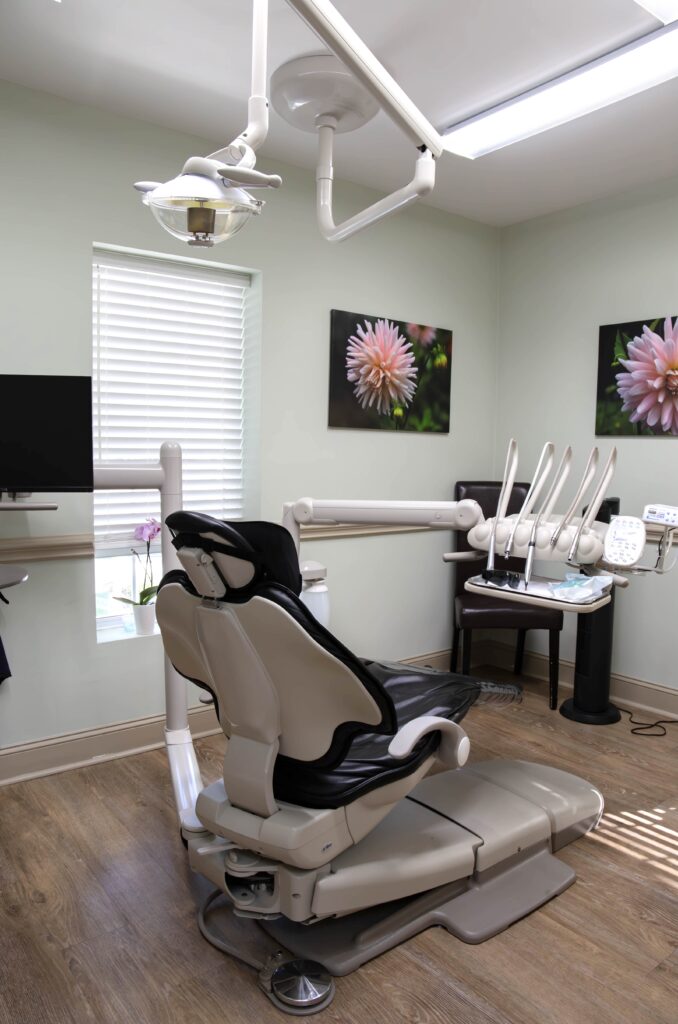Joint Vibration Analysis (JVA)
- Home
- /
- Services
- /
- Diagnostic & Preventative
- /
- Joint Vibration Analysis (JVA)
Joint Vibration Analysis (JVA)
Parkwood Dental Associates is pleased to offer Joint Vibration Analysis (JVA) for patients experiencing jaw pain and related symptoms. JVA provides a quick, non-invasive, and reliable measurement of TMJ function to assist in diagnosing TMJ issues.
During every dental exam at Parkwood Dental Associates, Dr. Todd Sander assesses the patient’s face and TMJs for any clicks, pops, or tightness when opening and closing the mouth. The temporomandibular joint (TMJ) is one of the body’s most complex joints. Like all human joints, the TMJ consists of surfaces that rub against each other during chewing, swallowing, or speaking. When the joint surfaces are smooth and well-lubricated, friction and vibration are minimal. However, if these surfaces become altered due to degeneration, disk displacement, or injury, jaw movements may produce increased friction and vibration.
Some patients may experience clicks or pops during the examination, but fortunately, these sounds may have been present for years without causing discomfort. Conversely, some patients may report pain and require a more detailed follow-up examination. Different TMJ disorders produce distinct vibration patterns. Through Joint Vibration Analysis (JVA), Dr. Sander can identify these patterns, enabling the differentiation between various TMJ disorders and facilitating appropriate treatment.
When two smooth, well-lubricated surfaces move together, friction is minimal, resulting in minimal vibration. However, if the surfaces are rough or inadequately lubricated, friction increases, leading to greater vibrations. Under normal conditions, human joints, including the TMJ, exhibit very smooth and well-lubricated articulating surfaces that produce little vibration during function. Yet, changes in these surfaces—due to degeneration, cartilage tears, perforations, or mechanical displacements—increase friction and, consequently, vibrations.
Joint Vibrational Analysis records the vibrations generated by joint tissues during movement. This technology, inspired by methods used in U.S. Navy submarines, captures vibrations rather than sounds. While all sounds are vibrations, not all vibrations produce audible sounds. JVA is far more accurate than palpation, stethoscope use, or even patient self-reports in measuring joint vibrations. The patterns and electronic signatures of your joints are compared against established standards for healthy joints. Additionally, this technology provides crucial objective documentation that is important for personal injury lawsuits and insurance claims. JVA allows us to monitor the TMJ over time, tracking potential joint degeneration and other jaw-related issues to prevent further damage or the progression of joint diseases. In many cases, the progression of these conditions can be addressed with simple solutions, such as an NTI appliance designed to reduce muscular strain on the joint.
How does it work?
Joint Vibrational Analysis (ADA approved) is a specialized tool that assesses the functionality of the joint during motion. Unlike MRI, X-rays, or even Cine MRIs, which provide static images of the joints in specific positions, JVA offers dynamic insights. The process involves placing headphones over the joints to record vibrations from either soft tissue (indicating proper disc function) or bone-on-bone grinding (a gravel-like sound). Most experts today consider this device essential for determining the optimal position of the mandible for therapy. Identifying this “best” position is crucial before beginning treatment. Aside from MRI, JVA provides the most reliable objective evidence of joint function and is significantly more affordable and quicker to administer than an MRI.

The JVA is one of the advanced services provided at Parkwood Dental Associates that few other dentists in the area provides. It allows for a better understanding of our patient’s dental needs.
If you’re experiencing any symptoms, please call Dr. Todd Sander for an appointment at (843) 571-6795.

